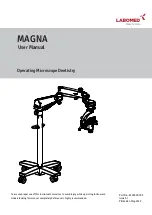
8
3730 E. SOUTHERN AVE., PHOENIX, AZ 85040 | USA
EXPOSING A SCREEN
The screen needs to be dried in a dark
location. Dry the screen in a horizontal
position with the outside print side facing
down. This positioning is essential to
aid the drawing emulsion to create a flat
and smooth surface. A fan can be used
to circulate the air around the screen to
decrease the drying time. The normal
drying time for a properly coated screen
can be anywhere from 30–60 minutes.
However, areas that have moisture in the
air will take longer.
There is no standard exposure time because of
all of the variables involved. Use an exposure
calculator to properly determine the correct
exposure time. Most emulsion manufacturers
have their own exposure calculator, but they all
function in a similar manner.
Exposure calculators are film positives that
have various degrees of detailed lines that are
covered with different factors. The purpose
is to expose the calculator onto a screen as a
starting time and each filter will have a factor
number. After the screen is washed out, observe
which image is the hardest while containing the
most detail and multiply the factory number by
the starting exposure time to get the correct
exposure time.
3.
4.
For example, a screen is exposed for one minute with the calculator and the best image washed
out has a filter factor of .5, so 1:00 x .5 = 30 seconds. To guarantee the best screens, test every
screen that has a different variable like: different mesh count, different emulsion brand, and
different coating technique.
A dual cure emulsion will need a starting point of at least two minutes with an exposing calculator.
It’s best to test for each season change. The seasons influence temperature, humidity and
moisture that will affect the exposing of a screen.
A Workhorse SD-10 drying cabinet will speed up the drying process and eliminate the danger of
dust, which will guarantee high quality screens and increase production speed.


































